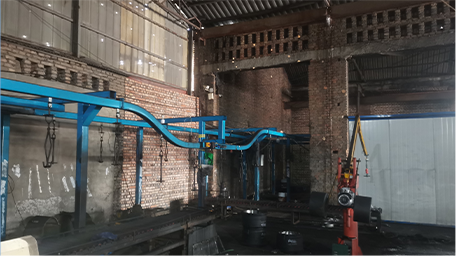Nov . 06, 2024 16:25 Back to list
Colorful Brake Drums for Enhanced Aesthetic and Performance in Vehicles
The Art and Engineering of Painted Brake Drums
In the world of automotive engineering, functionality and aesthetics often go hand in hand. One element that embodies this relationship is the brake drum. While primarily designed for performance and safety, the painted brake drum has emerged as a symbol of automotive personalization and artistry. This article delves into the significance, process, and impact of painted brake drums in the automotive landscape.
The Importance of Brake Drums
Brake drums play a crucial role in a vehicle's braking system, especially in older or certain types of vehicles that utilize drum brakes instead of disc brakes. They work by using friction to slow down or stop the vehicle when the brake shoes press against the inner surface of the drum. Although often overlooked, these components are pivotal for the safety of the vehicle, ensuring effective stopping power. However, their prominence in the automotive design has evolved, leading enthusiasts to recognize the potential for customization.
Aesthetic Appeal
While the primary role of a brake drum is functional, automotive enthusiasts and collectors have increasingly focused on the visual aspects of brake drums. Painted brake drums add a unique aesthetic touch to a vehicle's overall appearance. The choice of color, patterns, and finishes can transform what is typically an inconspicuous component into a striking visual element.
For many owners, a painted brake drum is an expression of personality. Car enthusiasts take pride in customizing their vehicles. Colors ranging from matte black to vibrant reds or compelling graphics can help create a cohesive theme that reflects the owner's style. This customization is not limited to individual trends; it can also be a nod to car culture, historical references, or even racing heritage.
The Painting Process
The process of painting brake drums requires careful consideration and precision. First and foremost, it's essential to ensure that the surface is adequately prepared. This involves cleaning any dirt, grease, or rust that may hinder paint adherence. Sanding the surface is often necessary to create a smooth base for painting.
Once prepped, the choice of paint becomes crucial. High-temperature paint is recommended for brake drums as they are subjected to significant heat during operation. Standard spray paint may not withstand the elevated temperatures and could lead to flaking or peeling. Instead, there are specialized automotive paints designed to endure the rigors of braking heat.
painted brake drums

Application techniques vary, but many enthusiasts prefer spray painting for an even finish. Multiple thin coats are generally more effective than a single thick coat, reducing the likelihood of runs and ensuring a more durable finish. After painting, it’s essential to let the paint cure properly, allowing it to harden and bond to the drum securely.
Functional Considerations
While aesthetic appeal is a significant driving force behind painted brake drums, it’s critical to recognize any functional implications. A well-painted brake drum, done correctly, does not impair the performance of the braking system. However, improper painting can lead to issues. For instance, if the paint gets on critical areas, it may affect the friction between the brake shoe and drum, leading to inefficient braking. Therefore, precise application is necessary.
Additionally, maintenance checks become essential. Over time, painted surfaces may chip or wear due to the heat and exposure to road conditions. Regular inspections help ensure that the painted finish does not compromise the integrity of the brake system.
Community and Culture
The painted brake drum phenomenon is not just an individual pursuit; it is part of a broader automotive culture that celebrates creativity and engineering. Car shows and meets often feature vehicles with intricately designed brake drums, creating conversations and connections among enthusiasts. Online forums and social media platforms serve as venues for sharing techniques, showcasing unique designs, and exchanging ideas for customization.
Moreover, this trend has implications for the aftermarket industry. Many companies now offer specialized kits that include paint, tools, and instructions for enthusiasts eager to personalize their brake drums. This surge in demand encourages innovation and brings additional options to the market, fostering a culture of creativity within the automotive community.
Conclusion
The painted brake drum is an epitome of the harmonious blend of art and engineering within the automotive world. While serving a critical safety function, they also offer a canvas for personal expression and creativity. As the automotive landscape continues to evolve, the painted brake drum will likely remain a cherished aspect of car culture, reflecting the individuality and passion of vehicle owners around the globe. Embracing this trend not only enhances the aesthetic appeal of vehicles but also strengthens the bond among automotive enthusiasts who celebrate both form and function in their craft.
-
Volvo Brake Drum: OEM Quality, Optimal Safety
NewsAug.27,2025
-
Durable Brake Drum MAZ for Heavy Duty Trucks | High Performance
NewsAug.26,2025
-
FUWA: Premium Quality, Reliable Performance & Innovative Solutions
NewsAug.25,2025
-
Liza Brake Drum: Superior Quality & Performance for Safe Driving
NewsAug.24,2025
-
Iveco Brake Drum | Premium OE Quality for Daily & Eurocargo
NewsAug.22,2025
-
Your Brake Drum Man: Quality & Performance Parts
NewsAug.21,2025
